When Did Beauty And The Beast Animated Come Out
-
This commodity is most the 1991 animated motion-picture show. For the 2017 live-action film, see Beauty and the Beast (2017 pic).
- "The most beautiful honey story e'er told."
- ―Tagline
Dazzler and the Animal is a 1991 romantic musical comedy fantasy animated pic produced at Walt Disney Feature Animation. It is the 30th film in the Disney Animated Catechism and the third motion picture in the Disney Renaissance. The film is based on the fairy tale La Belle et la Bête past Jeanne-Marie Leprince de Beaumont (which was based on a more detailed story of the aforementioned name and plot, written by Gabrielle-Suzanne Barbot de Villeneuve), and uses some ideas from the 1946 film of the same name. The film tells the story of a prince who is transformed into a Beast and a immature woman named Belle whom he imprisons in his castle. To become a prince again, the Beast must learn to honey Belle and win her love in return before the last petal falls from an Enchanted Rose, or he will remain a Beast forever.
The moving-picture show'due south animation screenplay was written by Linda Woolverton with story written by Roger Allers, Brenda Chapman, Chris Sanders, Burny Mattinson, Kevin Harkey, Brian Pimental, Bruce Woodside, Joe Ranft, Tom Ellery, Kelly Ashbury, and Robert Lence, directed past Gary Trousdale and Kirk Wise, and produced by Don Hahn. The music of the film was equanimous by Alan Menken and the lyrics for the movie were written by Howard Ashman (who also served as the pic's executive producer), both of whom had written the music and songs for The Little Mermaid, a previous Disney film.
Beauty and the Animate being was released on November 13, 1991. The film was met with universal acclaim from both critics and audiences and was a significant commercial success earning over $424 million at the box office throughout the world. Beauty and the Brute was also nominated for several awards, and won the Gilded World Award for Best Movement Moving-picture show - Musical or One-act (For the commencement time in an animated motion picture), with ii other awards for its music. Famously, Beauty and the Fauna was the first ever animated motion-picture show to exist nominated for the Academy Honor for All-time Picture, and was the only blithe picture to hold this honor until 2009, when the University Awards switched from 5 Best Picture nominations to 10, and Pixar's animated film Upwardly was nominated. It remains the only traditionally animated moving picture to be nominated. Beauty and the Brute received a total of half-dozen nominations, including Best Picture, Best Original Score, Best Sound, and iii nominations for its song. It ended upwardly winning 2, for Best Original Score and All-time Original Song for the song "Beauty and the Beast".
A directly-to-video midquel chosen Beauty and the Animal: The Enchanted Christmas was released in 1997. It was followed in 1998 by some other midquel, Belle's Magical Earth, and later by a stage product of the same name and a television spin-off series, Sing Me a Story with Belle. An IMAX special edition version of the original film was released in 2002, with a new five-infinitesimal musical sequence included. Afterward the success of the 3D re-release of The Lion Male monarch in 2011, Disney announced the film will return to theaters for a express fourth dimension in 3-D on January xiii, 2012. On March 2017, a live-action re-imagining was released.[1] [two]
In 2002, the motion-picture show was chosen for preservation by the U.s. National Film Registry by the Library of Congress as being "culturally, historically, or aesthetically meaning". [3]
Today, Beauty and the Beast is widely considered to be one of Disney's all-time films, likewise every bit one of the greatest animated films of all fourth dimension.
Plot
As told through stained-glass windows, a brutal and selfish young prince is visited past an sometime beggar adult female who offers him a rose in commutation for shelter. However, disgusted by the woman'south haggard appearance, the prince instead sneers at the rose and shuns her, despite her warning him not to approximate people past appearances, since dazzler is found within. After the prince blows her off over again, the woman reveals herself to be a magical enchantress. The prince attempts to repent, but information technology is also late to practise so, considering she had already constitute out that he had no love inside him. As punishment for his actions, she transforms the prince into a horrible brute and casts a spell on his castle and his servants, whilst the rose she offered him is revealed to be an enchanted rose that will bloom until his 21st birthday. The enchantress tells the prince that the spell will be broken, simply if he learns to beloved another and accept that person love him back before the concluding petal on the rose had fallen; if not, he will remain a beast for life. As years went by, he vicious into despair and became hopeless, believing that no one could ever love him.
A decade afterwards, in a small-scale town, a beautiful bookworm girl named Belle is seen as strange past the townsfolk. The popular town hunter, Gaston lusts after her, just Belle tries to avoid him because of his arrogance. Belle'due south dad, Maurice is also an outcast amongst the townsfolk due to his erratic inventions. When Maurice leaves to go to a fair, he ends up getting lost and stumbles upon the Animate being's castle where he is greeted by the castle'due south inhabitants who have transformed into anthropomorphic household objects: Cogsworth, the uptight butler who ended up beingness cursed as a drape clock; Lumiere, a kind-hearted maître d' who concluded up becoming a candelabra; Mrs. Potts, the housekeeper who was changed into a teapot, and her son Chip and his brothers, at present teacups, along with a whole agglomeration of others. With the exception of Cogsworth, the enchanted servants provide hospitality to Maurice, but the Beast comes to lock him upward in the dungeon for trespassing into his castle.
After Belle turns downwards Gaston's marriage proposal (made ludicrous past the fact that he organized a wedding ceremony simply outside her house, foolishly expecting her to accept out of the blue), Maurice'south horse comes back and takes Belle to the castle where she before long finds Maurice in the dungeon, but she soon meets the Animate being. In substitution for her dad's freedom, Belle offers to be the Fauna's prisoner in his stead. The Beast agrees and lets Maurice go and he and his servants program to make Belle try to fall for him in order to revoke the curse, which is hampered when the Beast's nasty temper makes Belle spurn coming to dinner with him. Back at the village at Gaston'southward tavern, Gaston is still reeling from Belle's rejection, but his spirits are lifted when his lackey, LeFou, and the townspeople sing about how no homo measures upwardly to him. Maurice bursts in and aimlessly seeks assistance to salvage Belle from the Animal at the castle, which earns him nix more than ridicule and rejection past the townsfolk, who but dismiss him equally "Crazy erstwhile Maurice".
Belle curiously decides to explore around the castle where she meets the servants and at her request, they requite her some dinner despite the Beast's orders confronting it. She soon enters the West Wing, which is the one section of the castle the Beast ordered her not to, and she happens upon the enchanted rose. But before she touches it, the Animal arrives and frightens her out of the West Wing and out of the castle. Belle tries to escape to the forest, merely she is confronted past a pack of wolves (who before tried to kill Maurice). Before she is eaten by them, yet, the Beast intervenes and saves her, but is wounded by the wolves in the process. She returns with him to the castle where their relationship begins to slowly improve as the Beast begins acting more selfless, even giving Belle access to a library where she tin can read all of the books she wants. Meanwhile, inspired past Maurice's 'crazy' story nigh the Beast, Gaston bribes the head warden of the local insane asylum, Monsieur D'Arque, to incarcerate Maurice unless Belle concurs to wed him. When they get to Belle'southward cottage, they discover information technology empty as Maurice just left before they arrive, so he forces LeFou to stay at the house until they return.
Subsequently sharing a romantic trip the light fantastic toe, the Creature lets Belle use a magic mirror to meet her begetter and discover that he's lost in the wood. Seeing her worried, the Brute decides to let Belle leave the castle to save her begetter. The servants are horrified when Cogsworth tells them this news, fearing that their one chance to exist human once more was squandered. When Belle gets Maurice back home, they soon find that Fleck has stowed away into Belle's pocketbook. They are soon interrupted past the villagers, led by Gaston, who arrived to send Maurice to the asylum. After rejecting Gaston again, Belle proves that her father is telling the truth by showing everyone the Beast with the magic mirror, which the Beast permit her have with her. Seeing that Belle has feelings for the Beast, Gaston twists the truth that the Beast is a monstrous animate being and convinces the villagers to attack him, and they lock Belle and Maurice in the cottage den to prevent them from interfering. Luckily, Belle and Maurice are soon freed past Bit, who uses Maurice'south invention that he was going to take to the off-white earlier.
At the castle, the servants discover the mob trying to storm the castle and before long go the jump on them when they break open up the castle doors. While the servants boxing and hunt off the entire townsfolk, Gaston before long finds the depressed Beast in the Westward Fly. They have a fight outside in the pelting, where Gaston taunts the Brute for his feelings to Belle. When he sees Belle has returned to the castle, he finds the strength to defend himself and threatens to drop Gaston off the rooftops, but he becomes merciful and relents. Every bit the Beast attempts to reunite with Belle, Gaston stabs Beast in the dorsum, only this causes him to topples from the balcony to his demise. The Animal dies in Belle's arms, and she tearfully proclaims her dear for him. This causes the curse to finally be lifted and revive the Beast and return him and all of his servants into their human forms. Belle and the now human Brute have a dance in celebration of the event.
Bandage
- Paige O'Hara equally Belle
- Robby Benson as Beast
- Richard White as Gaston
- Jerry Orbach equally Lumiere
- Angela Lansbury as Mrs. Potts
- David Ogden Stiers as Cogsworth/Narrator
- Bradley Michael Pierce as Scrap
- Jesse Corti as LeFou
- Rex Everhart as Maurice
- Hal Smith equally Philippe
- Jo Anne Worley as Wardrobe
- Kimmy Robertson as Fifi
- Frank Welker as Footstool, aka Sultan, Wolves
- Mary Kay Bergman and Kath Soucie as the Bimbettes
- Tony Jay every bit Monsieur D'Arque
- Jack Angel every bit Tavern Man, Tom
- Alec Murphy as Baker
- Bill Farmer as Stanley
- Alix Korey equally Singer
- Mickie McGowan as French Peasant Woman
- Patrick Pinney every bit Walter
- Phil Proctor as Dick
- Ron Faber every bit Wolves
Additional Voices
- Bruce Adler
- Scott Barnes
- Vanna Bonta
- Maureen Brennan
- Liz Callaway
- Philip Clarke
- Margery Daley
- Jennifer Darling
- Albert de Ruiter
- George Dvorsky
- Bruce Fifer
- Johnson Flucker
- Larry Hansen
- Randy Hansen
- Mary Ann Hart
- Phyllis Kubey
- Hearndon Lackey
- Sherry Lynn
- Larry Moss
- Panchali Null
- Wilbur Pauley
- Jennifer Perito
- Caroline Peyton
- Cynthia Richards-Hewes
- Stephani Ryan
- Gordon Stanley
- Stephen Sturk
Development
- Master article: Beauty and the Brute Original Screenplay
The story was originally going to have a vastly dissimilar beginning that was closer to the original tale, where Maurice was a broke merchant, Belle's family unit was forced to motility to a farmhouse and almost losing it due to not keeping up with taxes, and Maurice ends up discovering the Beast'due south castle subsequently getting lost while searching for a potential buyer for his tardily married woman's music box. Information technology was cutting considering of Jeffrey Katzenberg because information technology far too dark and dramatic.
Animation
Product of Beauty and the Animate being had to be completed on a compressed timeline of two years rather than four because of the loss of production time spent developing the earlier Purdam version of the picture show. Most of the production was done at the master Characteristic Blitheness studio, housed in the Air Way facility in Glendale, California. A smaller team at the Disney-MGM Studios theme park in Lake Buena Vista, Florida assisted the California squad on several scenes, particularly the "Be Our Guest" number.
Beauty and the Brute was the second motion-picture show produced using CAPS (Reckoner Animation Product System), a digital scanning, ink, paint, and compositing system of software and hardware developed for Disney by Pixar. The software immune a wider range of colors, also as soft shading and colored line effects for the characters, techniques lost when the Disney studio abased hand inking for xerography in the tardily 1950s. CAPS also allowed the production coiffure to simulate multiplane effects: placing characters and/or backgrounds on dissever layers and moving them towards/abroad from the camera on the Z-axis to give the illusion of depth, every bit well as altering the focus of each layer.
In improver, CAPS allowed an easier combination of hand-drawn art with computer-generated imagery, which before had to be plotted to animation cells and painted traditionally. The latter technique was put to significant utilise during the "Beauty and the Beast" flit sequence, in which Belle and Beast dance through a computer-generated ballroom equally the camera dollies around them in simulated 3D space. The filmmakers had originally decided against the use of computers in favor of traditional blitheness, only later, when the technology had improved, decided it could be used for the i scene in the ballroom. The success of the ballroom sequence helped convince studio executives to further invest in calculator animation.
Music
Ashman and Menken wrote the songs during the pre-production process in Fishkill, the opening operetta-styled "Belle" being their showtime limerick for the movie. Other songs included "Exist Our Guest", sung to Maurice by the objects when he becomes the commencement visitor to the castle in a decade, "Gaston", a solo for the swaggering villain, "Human Again", a song describing Belle and Beast's growing love from the objects' perspective, the love ballad "Beauty and the Beast", and the climatic "The Mob Song".
As story and song evolution came to a close, full production began in Burbank while voice and song recording began in New York City. The songs were recorded alive with the orchestra and the vocalization cast in the room rather than overdubbed separately, in order to give the songs a cast anthology-like "free energy" the filmmakers and songwriters desired.
During the grade of production, many changes were made to the structure of the film, necessitating the replacement and re-purposing of songs. Subsequently screening a mostly animated version of the "Be Our Guest" sequence, story creative person Bruce Woodside suggested that the objects should be singing the song to Belle rather than her father. Wise and Trousdale agreed, and the sequence and song were retooled to replace Maurice with Belle.
"Homo Again" was dropped from the film before animation began, as its lyrics caused story issues about the timeline over which the story takes place. This required Ashman and Menken to write a new song in its place. "Something There", in which Belle and Animate being sing (via voiceover) of their growing fondness for each other, was composed late in production and inserted into the script in identify of "Human Again". Menken would afterward revise "Human Over again" for inclusion in the 1994 Broadway phase version of Dazzler and the Beast, and some other revised version of the song was added to the film itself in a new sequence created for the film's Special Edition re-release in 2002.
Ashman died of AIDS-related complications on March 14, 1991, eight months prior to the release of the film. He never saw the finished film, and his work on Aladdin was completed by another lyricist, Tim Rice. A tribute to the lyricist was included at the finish of the credits crawl: "To our friend, Howard, who gave a mermaid her vocalisation, and a animal his soul. We volition be forever grateful. Howard Ashman: 1950–1991".
A popular version of the "Dazzler and the Beast" theme, performed by Céline Dion and Peabo Bryson over the cease credits, was released as a commercial single from the film'southward soundtrack, supported with a music video. The Dion/Bryson version of "Beauty and the Fauna" became an international pop striking, reaching the Top X of the singles charts in the United States and the United kingdom of great britain and northern ireland.
In the Special Edition DVD release, the second disc independent Jump 5's music video for Beauty and the Animal. The newly-released Diamond Edition contains Jordin Sparks' version of the song.
Reception
Upon the theatrical release of the finished version, the film was universally praised, with Roger Ebert giving it four stars out of four and saying that "Beauty and the Beast reaches back to an older and healthier Hollywood tradition in which the all-time writers, musicians, and filmmakers are gathered for a project on the assumption that a family audience deserves great entertainment, as well." The movie received mostly positive reviews, among them some of the all-time notices the studio had received since the 1940s. Rotten Tomatoes, a picture review aggregator, shows Beauty and the Fauna with a 94% approval rating averaged from 108 reviews of the original theatrical release and later theatrical and home video versions. The use of computer animation, particularly in the "Dazzler and the Creature" ballroom sequence, was singled out in several reviews as 1 of the pic'south highlights.
Smoodin writes in his book Animating Culture that the studio was trying to make up for earlier gender stereotypes with this film. Smoodin also states that in the fashion it has been viewed as bringing together traditional fairy tales and feminism also as reckoner and traditional blitheness, the film's "greatness could be proved in terms technology narrative or even politics". Another author writes that Belle "becomes a sort of intellectual less by actually reading books, it seems, than by hanging out with them," but says that the film comes closer than other "Disney-studio" films to "accepting challenges of the kind that the finest Walt Disney features met". David Whitley writes in The Thought of Nature in Disney Animation that Belle is different from earlier Disney heroines in that she is generally free from the burdens of domestic housework, although her role is somewhat undefined in the aforementioned way that "contemporary civilization now requires most adolescent girls to contribute lilliputian in the way of domestic work before they leave domicile and have to take on the fraught, multiple responsibilities of the working mother." Whitley also notes other themes and modern influences, such every bit the picture show's disquisitional view of Gaston's chauvinism and mental attitude towards nature, the cyborg-similar servants, and the father'south role as an inventor rather than a merchant.
Betsy Hearne, the editor of The Bulletin of the Heart for Children'due south Books, writes that the film belittles the original story's moral near "inner dazzler," as well as the heroine herself, in favor of a more hardhearted struggle; "In fact," she says, "it is not Beauty's lack of dearest that almost kills Disney's beast, but a rival's dagger."
Stefan Kanfer writes in his book Serious Business that in this film "the tradition of the musical theater was fully co-opted," such as in the casting of Broadway performers Angela Lansbury and Jerry Orbach. IGN named Beauty and the Animal as the greatest animated picture show of all fourth dimension, directly ahead of WALL-Eastward.
Releases
- Main article: Beauty and the Creature (video)
Special/Platinum Edition
Beauty and the Fauna ii-Disc Special Edition (Platinum Edition) DVD was released on Oct 8, 2002. It was Fully Restored and Remastered with an All-New Remixed Soundtrack. The special edition includes a deleted song called "Human Again". The Special Edition DVD went to the Disney Vault (out-of-print) on Jan 31, 2003, along with its sequel (Beauty and the Brute: The Enchanted Christmas). On October 5, 2010, Dazzler and the Beast was released on Disney Blu-ray and again in Disney Digital 3-D.
Diamond Edition
The film was released from the Disney vault on Oct 5, 2010, as the second of Disney'south Diamond Editions, in the form of a 3-Disc-Blu-ray Disc and DVD combination pack; representing the first release of Beauty and the Beast on habitation video in high-definition format. This edition consists of iv versions of the flick: the original theatrical version, an extended version, the New York Picture Festival storyboard-only version, and a fourth iteration displaying the storyboards via picture-in-motion picture alongside the original theatrical version. The bonus cloth contains never-before-seen art, making of video, and interviews forth with new games activities. A two-disc DVD edition was released on November 23, 2010. It was too announced that Disney would release 3D Blu-ray in Oct 2011.
Signature Edition
A 25th Ceremony Edition of the film was released on Digital HD on September half dozen, 2016, and on Blu-ray/DVD on September 20, 2016. It was later released in 4K Ultra HD on March 10, 2020.
Videos

Beauty and the Fauna - Sneak Peek (from The Jungle Book 1991 VHS)
1991 Sneak Peek Trailer
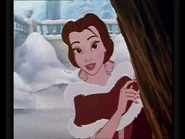
Beauty and the Beast - Original Release Trailer (1991)-2
1991 Original Theatrical Trailer
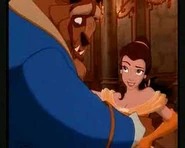
Beauty and the Beast - 1st IMAX Trailer (2001)-2
2001 IMAX Theater Trailer
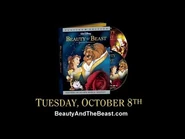
Beauty and the Animate being - Platinum Edition Trailer three-two
2002 Platinum Edition Trailer
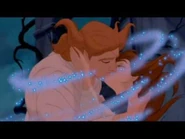
'Beauty and the Beast' - Diamond Edition Blu-Ray Trailer-2
2010 Diamond Edition Trailer
Signature Edition Videos

Dazzler and the Beast 25th Anniversary Edition

Dazzler and the Fauna Original Release Trailer

Dazzler and the Brute Original Music Video

Beauty and The Beast Be Our Guest Oke

Beauty And The Animal Gaston Sing Along

Dazzler and the Animate being The Recording Sessions

Beauty and the Animal The Missing Link

Beauty and the Creature Be Our Guest Kids Post 15 Tv set Spot

Beauty and the Beast Be Our Invitee Kids Post 30 Television set Spot

Beauty and the Beast Music Medley fifteen Post TV Spot

Dazzler and the Creature Celebrate Bonus Developed Mail xxx
Gallery
Trivia
- Originally, when plotting with Monsieur D'Arque to blackmail Belle, Gaston and LeFou were going to actually visit the Asylum, and we would accept seen its interior. This scene was cut from the picture show every bit it would have been much too disturbing for a Disney movie, especially with the insane laughing and yelling from the patients.
- Originally, Beast was to have brought back a deer he had killed in the woods to the castle and eat information technology in an animalistic manner, but it was cut because it would have resulted in the audience viewing him with disgust, and not with the intended sympathy. Nonetheless, the Beast hunting for his food in a more animalistic manner is yet unsaid in the film with the presence of a rotting rib-cage being seen briefly in the West Wing.
- In previous drafts, Belle was intended to come across with some servants in the Beast'southward Library shortly after existence given information technology by the Animal, although it was cutting for fourth dimension constraints.
- Originally, Gaston was going to stab the Beast a second time before Creature knocked him off, though it was cutting to tone down violence. In addition, one of the earliest renditions of the scene had him set to shoot the Brute with his blunderbuss, only for Belle to end him by whacking him in the head with a slab. This would crusade Gaston to lose his ground, and fall of a cliff. Upon landing, he would accept survived with just a broken leg, only to be mauled to decease past the aforementioned wolves Belle and Maurice encountered.
- The theatrical version only has the song "Dazzler and the Beast" at the end credits. The IMAX and Special Edition versions have the vocal and the unused score "Death of the Beast" due to having longer credits involving the add-on of "Homo Again".
- In the stained glass image at the beginning of Dazzler and the Beast information technology looks equally though the prince has two pedigree looking dogs; 1 white and ane brown. But throughout the movie, there is one dog depicted and when returned to its true form it looks more like a mutt, that is Sultan.
- Beauty and the Beast is the commencement Disney animated classic (other than 101 Dalmatians, The Lion Male monarch and the first ii Toy Story films) to feature the 2006 Walt Disney Pictures logo and the Walt Disney Animation Studios logo at the get-go of the film on current releases.
- There was originally talk of a sequel, where Gaston had a younger brother, named "Avenant" (named as a nod to Belle'southward unwanted suitor from French poet and filmmaker Jean Cocteau'southward 1946 adaptation of Beauty and the Beast), who would seek revenge for his brother'south demise (and found himself as superior to Gaston (their late-male parent's favorite), and finally stepping out of his shadow, once and for all); this idea was, instead, recycled for the sequel to the The Lilliputian Mermaid, The Little Mermaid Ii: Return to the Sea, with Morgana, sister to the late Ursula, claiming to be seeking revenge for Ursula'south death, but actually wanting to succeed where Ursula (their mother's favorite daughter), had failed.
- The blitheness at the cease of Belle and the Prince dancing was actually reused animation of Aurora and Prince Phillip dancing at the end of Sleeping Beauty. This was done considering information technology was near the end of production, and they had already gone over budget.
- This is the beginning Disney animated motion picture to have a dissever Spanish dub for Spain since their previous films released in that aforenoted country were Latin-American dubbings.
- According to Linda Woolverton, Beauty and the Beast's themes acted as the inspiration for the 2014 Maleficent film.[4]
- The village was inspired by Alsace, French republic.
Goofs
- During the vocal "Belle", Belle opens a door to a edifice, and when she exits the building, the door is closed, despite her not closing the door.
- When LeFou and two of Gaston'due south buddies are chasing Sultan, LeFou'due south left foot is blank as Sultan had stolen his left shoe and is running off with it, but when the iii enter the kitchen, LeFou is wearing his left shoe once again even though Sultan is still holding it.
References
- ↑ http://insidemovies.ew.com/2014/06/04/bill-condon-live-activity-beauty-and-the-beast/
- ↑ http://variety.com/2014/picture/news/pecker-condon-dazzler-and-the-creature-disney-1201151834/
- ↑ https://www.loc.gov/detail/event-395317/beauty-and-the-animate being/2019-07-18/
- ↑ Rothman, Lily (May 30, 2014). "The Aforementioned Woman Wrote Maleficent and Dazzler and the Animal—Here's How They're Linked". Fourth dimension. Retrieved on January xvi, 2014.
External links
| v - e - d | ||||||||||||||
|---|---|---|---|---|---|---|---|---|---|---|---|---|---|---|
|
| five - east - d | ||||||||
|---|---|---|---|---|---|---|---|---|
|
| five - e - d | ||||||||||||||
|---|---|---|---|---|---|---|---|---|---|---|---|---|---|---|
|
Source: https://disney.fandom.com/wiki/Beauty_and_the_Beast_%281991_film%29
Posted by: adornofreeack.blogspot.com


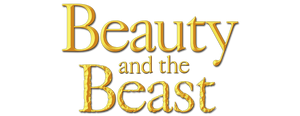
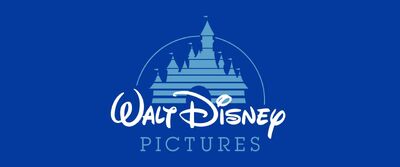
0 Response to "When Did Beauty And The Beast Animated Come Out"
Post a Comment